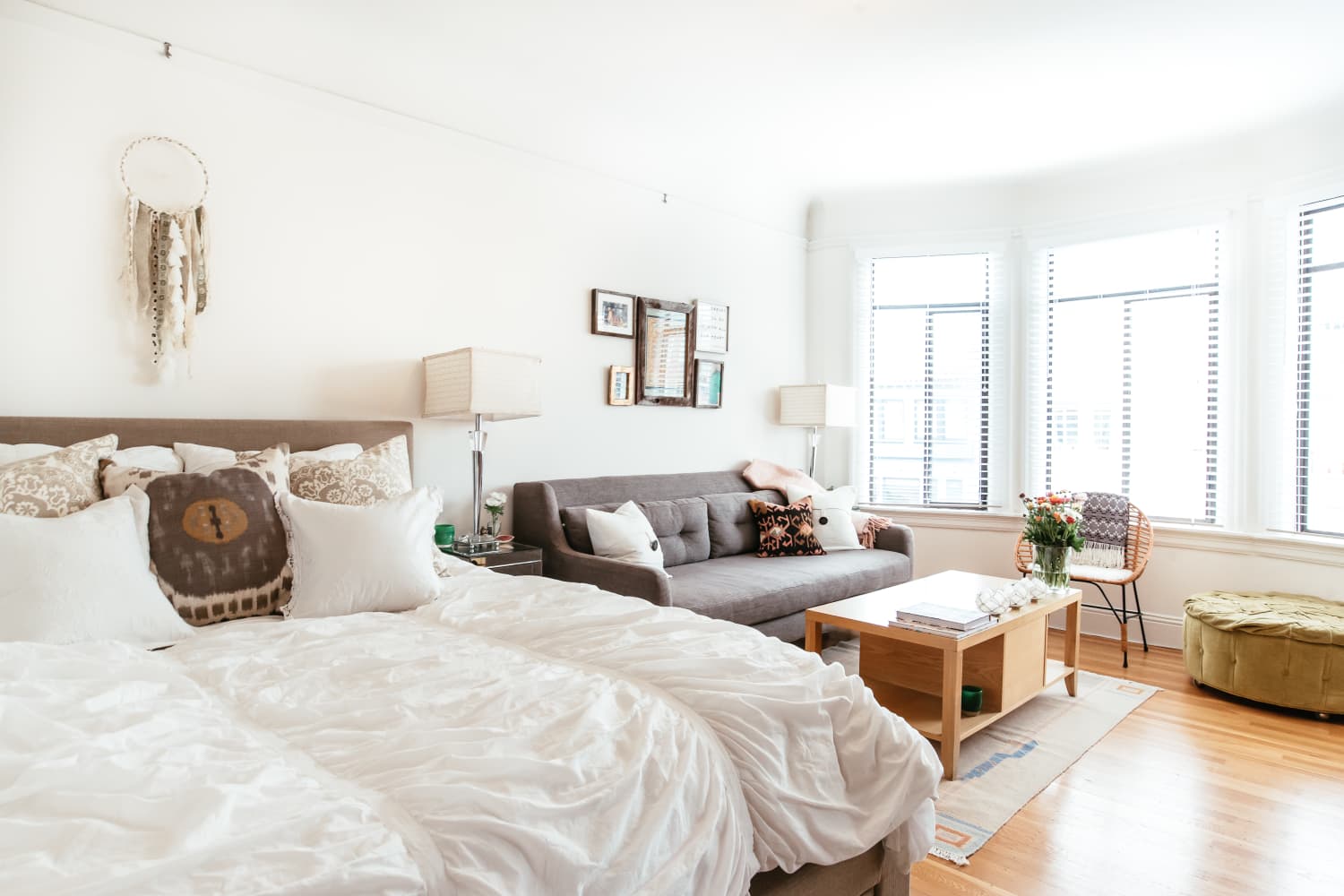
You want your apartment to feel like home, so as soon as you move in, you add little personal touches throughout the space — snapshots of you and your friends on the refrigerator, a bold floral shower curtain, a color-block bedspread, a cheeky welcome mat. But, if you’re like most renters, you know you shouldn’t even think about touching the walls.
What gives? Why are landlords so weird about not letting tenants paint or hang stuff up, at least not with traditional methods like nails or screws? What’s the big deal about a fresh coat of paint or a few teeny-tiny holes in the walls, especially when walls are the biggest, blankest canvas in your apartment?
The answer, perhaps unsurprisingly, boils down to time and money.
Landlords often nix painting or hanging things on the walls because they want to get the best return on their investment. This means minimizing extra expenses like extensive re-painting or drywall patching between tenants; it also means renting the unit as quickly as possible after you leave, which they can’t do if the unit needs more work than usual.
Though tenants may think they’re pros at painting or that they’re being discreet with nail holes, landlords don’t always agree. If you want to get your full deposit back and stay in the good graces of your landlord, it’s best to leave the walls alone (at least until you buy a place of your own).
“Renters need to keep in mind that although investment property owners want the tenant to be at home, the home is, in fact, not their property and will need to be put back to the original condition upon lease end,” says Stacy Brown with Real Property Management.
Colorful paints can be problematic because not everyone has the same taste, which means future tenants may be turned off from the unit because of the color you chose. Because of that possibility, your landlord will likely re-paint the unit a more neutral color like white or beige after you move out.
But even if you choose what you consider to be a neutral paint color, you’re probably still creating a headache for your landlord, hence the “no paint” policy in many leases.
“It can be quite difficult to match the color exactly if it is not from the same batch,” Brown says. “Even when a tenant leaves a can for future use, the paint loses water through evaporation and wicking.”
What’s more, what you perceive as a simple paint job can actually lead to more serious, long-term issues that your landlord has to deal with.
“In some cases, damage might be irreversible — painting previously unpainted brick such as exposed walls or fireplaces or wood trim is not something that can easily be undone and can change maintenance needs for those surfaces that have lasting implications on the property,” says Kate Ziegler, a landlord and real estate agent in Massachusetts and New Hampshire. “For example, latex paint on brick can trap moisture inside and cause spalling, when brick faces break off and deteriorate.”
And even if you expertly hang pictures or artwork with nails or screws, your landlord has to patch the holes before the next tenant moves in. And if you accidentally misjudge the weight of what you’re hanging, you could end up damaging your belongings or the wall itself (especially if the wall is plaster, not drywall, which is common in historic buildings).
Ziegler encourages all of her tenants to reach out to her before they try to hang anything on the walls. Since she’s intimately familiar with the property and has lots of experience with past tenants, she’s happy to offer advice and even lend a hand.
“Personally, if tenants have a question about whether a wall can support their TV mount or heavy mirror, I would always rather they ask so that we can help install a solution that will hold their things without damaging our walls,” she says.
And for those who are stuck on how to decorate without painting or hammering, you’re in luck: This very website is a goldmine of renter-friendly decorating ideas.

